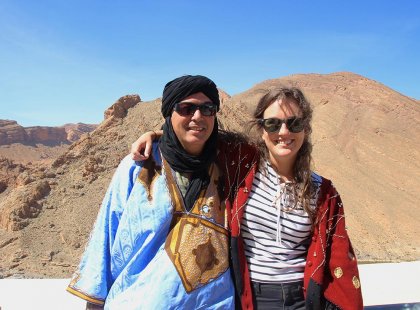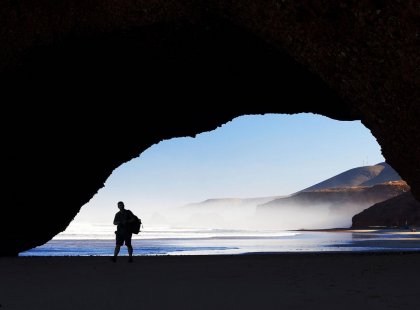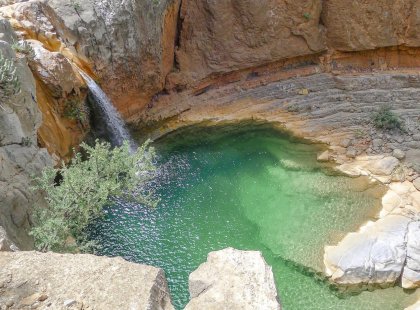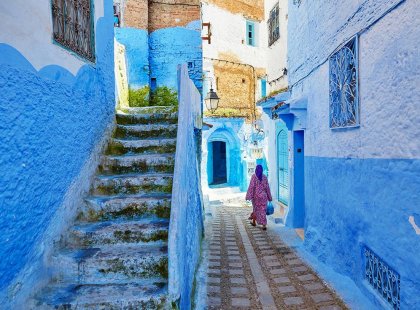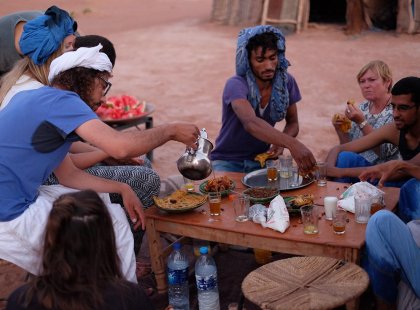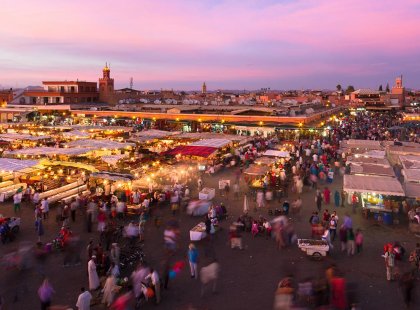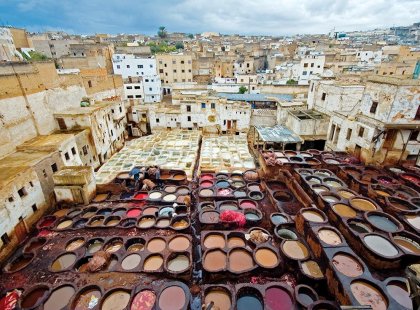Discover Morocco on this three week long, all-encompassing adventure. Discover Morocco, the land of contrasts - soaring mountains, lush valleys, the vast, unforgettable Sahara Desert and often missed pristine waters hiding in secret valleys and sprawling untouched beaches of southern Morocco. Travel in the footsteps of pirates, sultans and desert nomads, exploring the colonial architecture of Casablanca, the ancient Roman ruins of Volubilis, the medieval city of Fes and the intricate clay architecture of the Ait Benhaddou Kasbah. Move further to the south to explore a new side to Morocco that has inspired writers, painters and travellers. Enjoy the warm local hospitality and embark on this exotic, three week long adventure that will allow you to fully discover Morocco, the jewel of North Africa.
-
Duration: 25 daysService level: Standard
-
Starts in: Casablanca ApparthotelPhysical Grading: Light
-
Ends in: Grace MarrakechAges: 15+
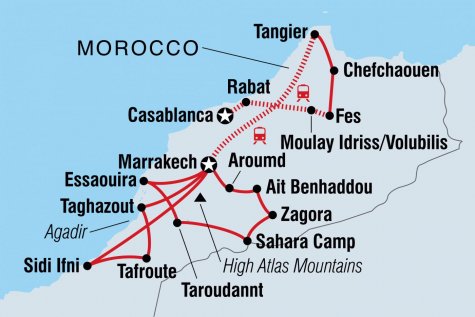
Itinerary
Start place: Casablanca Apparthotel
End place: Grace Marrakech
Inclusions
Included
- Rabat orientation walk
- Entrance and guided tour Volubilis
- Fes - Guided walking tour
- Guided trek in the High Atlas Mountains
- Ancient library
- Camel ride
- Guided walking tour Essaouira
- Guided tour of Sidi Ifni
- Tafrouat museum - La Maison Berbère
- Guided tour of Tafroute
- Yoga class
- Surfing class
-
Transport
4x4, overnight sleeper train, private vehicle, public bus, taxi, train, camel -
Accommodation
Desert camp (1 night), Gite (1 night), Guesthouse (1 night), Hotel (15 nights), Overnight sleeper train (1 night), Riad (3 nights), Surf camp (2 nights)

